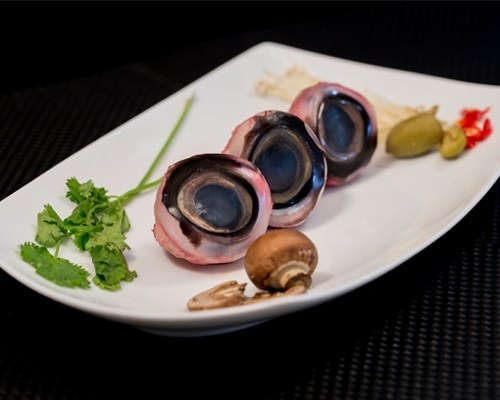'Haggis' of Scotland - The Most Bizarre Food in the World
 Top 10 Most Beautiful Castles In Scotland Top 10 Most Beautiful Castles In Scotland |
 Top 7 Interesting Facts about Scotland Top 7 Interesting Facts about Scotland |
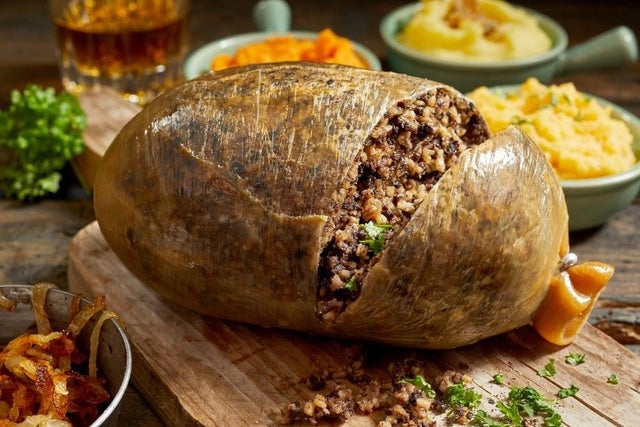 |
| Haggis is Scotland's national dish - Photo: The Scotsman |
What is Haggis?
The national dish of Scotland is haggis, a type of pudding made from minced sheep (or other animal) liver, heart, and lungs that have been combined with oatmeal, beef or mutton suet, and other seasonings like onion and cayenne pepper. According to Britannica, the mixture is stuffed into a sheep's stomach and then boiled.
Haggis is affordable, flavorful, and filling. Haggis is now served with some ceremony, even bagpipes, especially on Burns Night (which is celebrated every year on January 25, the birthday of Robert Burns), and Hogmanay, as the Scots refer to their New Year's celebrations.
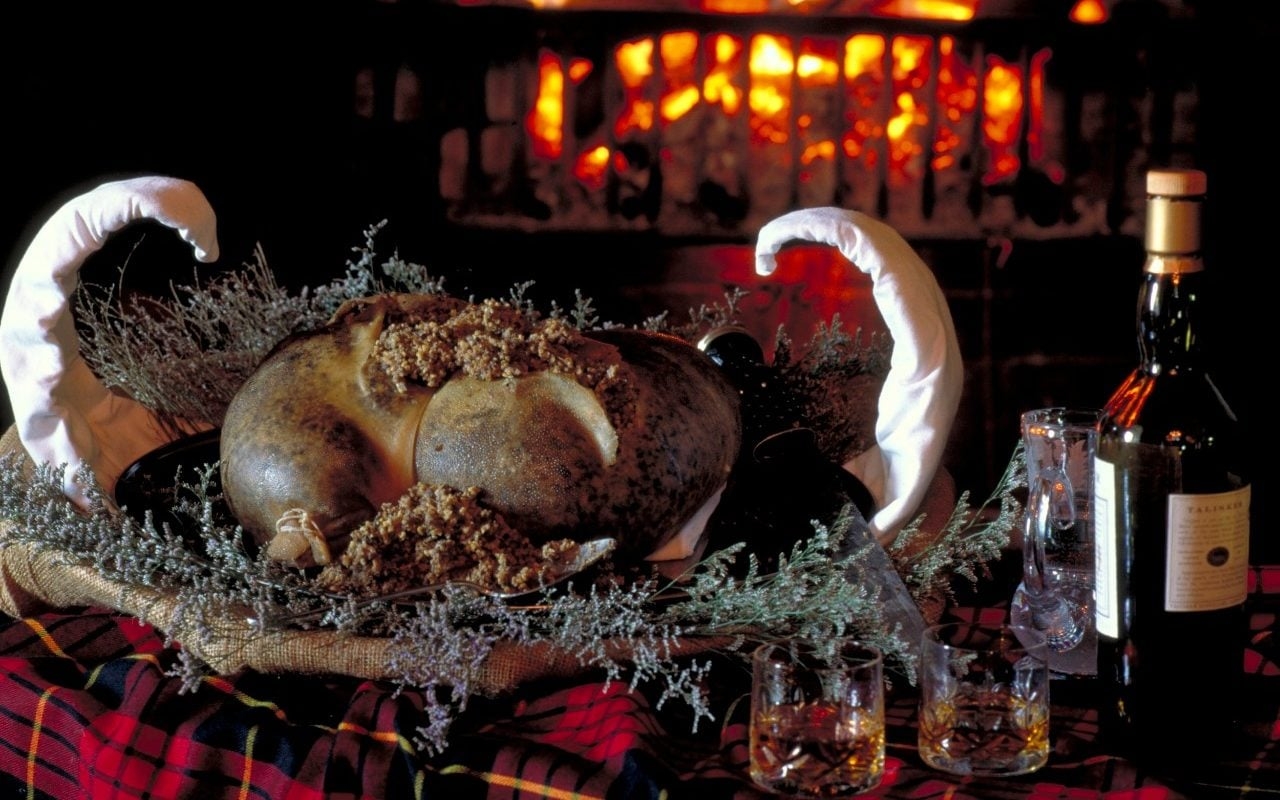 |
| Haggis served on Burns Night. Photo: The Telegraph |
Origin of Haggis
According to English author Gervase Markham (c. 1568-1637) in The English Huswife (1615), the dish was long popular in England even though it has been regarded since the mid-18th century as a dish that is uniquely Scottish. Although Marcus Apicius, Aristophanes, and even Homer make references to dishes with a similar composition, the origin of this dish is still more ancient. The origin of the word "haggis," which first appeared in print in the fifteenth century, is unknown.
Haggis has an exceptionally poor reputation, perhaps more so than any other food. This Scottish national dish, which consists of a mixture of oatmeal, spices, and sheep's internal organs, is wrapped in a sheep's stomach and has long been the target of jokes. Even though some of its detractors haven't had a chance to try it in more than 40 years, it's a dish that people love to criticize. This is due to the fact that since 1971, when foods containing sheep's lungs were outlawed, it has been unlawful to import authentic Scottish haggis into the United States.
Although haggis is now a uniquely Scottish tradition, its origins may have been French, Roman, or Scandinavian in the past. According to some, the word "haggis" originates from the French verb "hacher," which means to mangle or chop up. Others maintain that a dish resembling it can be found in texts dating back to Homer's "Odyssey," and English food historian Clarissa Dickson-Wright asserts that haggis originated in Scandinavia "even before Scotland was a single nation."
Although the dish's precise origins are still unknown, food historians concur that it was a dish eaten by peasants. A great way to feed a group while ensuring that no meat was wasted would have been to package undesirable muscle meats like liver and kidneys along with difficult to cook cuts like lungs and intestines into a convenient stomach packaging.
Haggis was not celebrated until 1787, when poet Robert Burns wrote his famous ode "Address to a Haggis." Burns' poem expresses his love for the "great chieftain o' the puddin' race" and elevates what was once a common meal into one that rivals any fricassee or ragout from France. Burns was already regarded as a national hero, and haggis' fame quickly grew. Burns' friends started remembering him annually on his birthday, January 25, after his passing, and this is how the "Burns Supper" custom was born. Even today, the suppers still feature Scottish cuisine, Scotch whiskey, and a lavish haggis presentation to the assembled guests.
Although haggis' best chance to shine is at Burns Suppers, the dish is still popular throughout Scotland.
How to Make Haggis?
This recipe offers a traditional method for preparing a traditional haggis. Cooking the sheep's pluck is the first step, and it should be done at least one day in advance.
Ingredients (for 6 servings - 180 mins)
| sheep’s stomach sheep’s pluck suet sage thyme rosemary | salt ground pepper onion oatmeal chopped parsley (for garnishing |
 |
| Pluck is a combination of lamb's heart, liver and lungs. Photo: Great British Chefs |
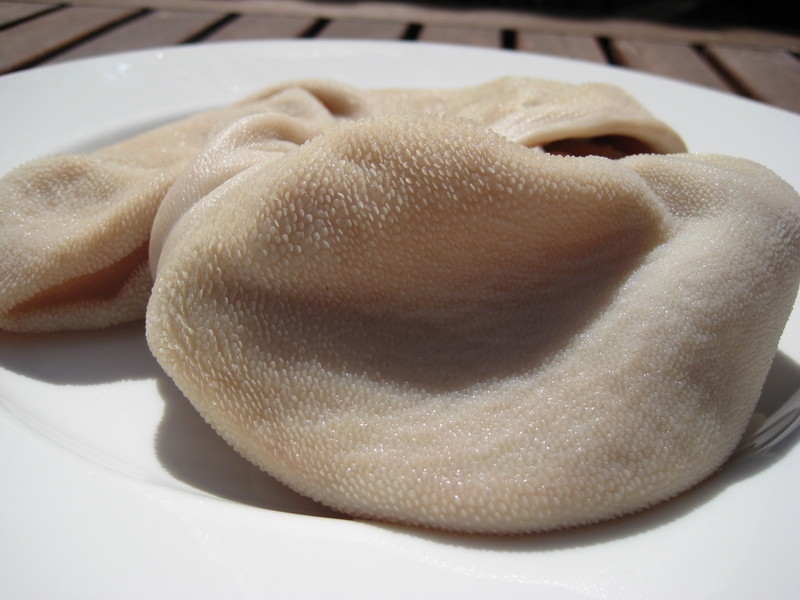 |
| Sheep's stomach. Photo: The Art and Mystery of Food |
Instructions
1. Place sheep’s pluck in a large bowl of unsalted water. Simmer gently for two hours until tender. Remove from heat and let cool overnight in the water it was cooked in.
2. The following day, strain and reserve the stock. Chop the meat finely, transfer it into a large bowl, and season with salt, ground white pepper, rosemary, sage, and thyme.
3. Chop the onion and lightly toast the oatmeal. Mix them with seasoned meat. Add the suet and a pint of stock and mix until combined.
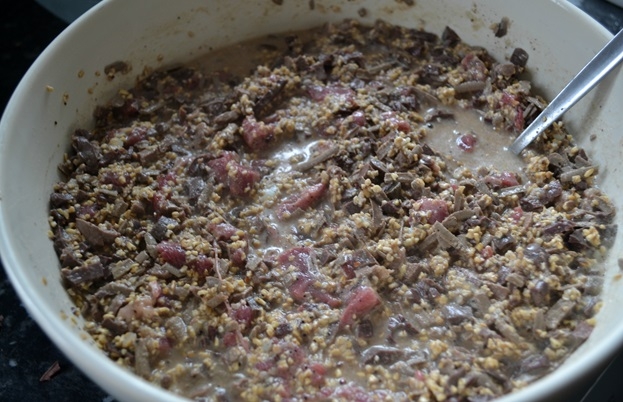 |
| The offal is mixed with oats and spices to make the filling. Photo: Great British Chefs |
4. Fill a sheep stomach with the meat mixture so it is half full. Use a strong thread to sew it up and make a few holes with a skewer, so it doesn’t explode during cooking.
5. Cook the haggis for 3 hours in boiling water. If necessary, add more water during cooking, so the haggis is always covered.
6. After the haggis has been cooked, transfer it to a serving plate, cut it open, and garnish with chopped parsley.
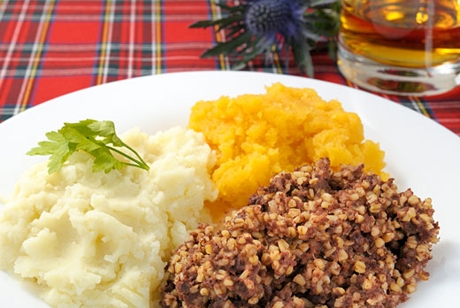 |
| Photo: BBC America |
Cooking Tips
1. Sheep’s stomach
You must begin with a sheep's stomach if you choose to make haggis the old-fashioned way. The majority of recipes advise turning it inside out before filling it and soaking it in salted water for an entire night. You can also use commercial sausage casing as an alternative. Whatever you decide, make sure to only fill half of the container with filling because it expands during cooking. Make some holes in the casing with a fork, toothpick, or skewer to keep it from blowing up. Also, remember to sew or tie it securely with kitchen thread.
2. Sheep’s pluck
This noun, which is also known as offal, typically refers to the animal's heart, liver, and lungs. They should be softened in unsalted water before letting them cool. The sheep's pluck can be finely grated, minced, or chopped, depending on the desired texture. The water they were cooked in shouldn't be thrown away because it will be used to make haggis in the future.
3. Oatmeal
The proportion of oatmeal to meat varies by haggis recipe, but all call for lightly toasting the oatmeal in the oven before combining it with other ingredients. Put the oatmeal in a shallow baking dish and toast it in a medium oven for a few minutes until it turns light golden.
4. Suet
Suet, which is the beef or lamb fat that covers the animal's kidneys and other internal organs, is a common component in Scottish, British, and Irish cuisines. It can be substituted with shortening, but it doesn't have the same distinctively rich, meaty flavor. Shortening should be frozen before grating or pulsing in a food processor.
5. Seasonings
The basic seasonings of salt, pepper, and finely chopped onions are used to season the meat mixture in traditional haggis recipes. Additionally welcome are herbs like thyme, sage, and rosemary. Add some cayenne pepper, soy sauce, or even garam masala to the dish to kick it up a notch.
6. Cooking
The most popular method of preparing haggis is to simmer it in the stock that remains after preparing the sheep's pluck. Haggis must be cooked with water submerged in it, so if more water is needed, add it. The haggis typically needs three hours to cook completely.
7. Baking
It is possible to prepare haggis in the oven as an alternative. In this situation, pre-made haggis is frequently used. For instance, 450 g of haggis packaged in a package needs to be poked with a skewer, toothpick, or fork, covered in foil, and baked for an hour. Haggis should be baked at 180 degrees Celsius in a fan oven, 200 degrees Celsius in a regular oven, or 6 degrees Celsius in a gas oven. The baking time can range from 15 minutes to an hour, so be sure to carefully follow the butcher's or producer's instructions.
Conclusion
Traditionally, haggis is served with mashed potatoes (also known as "tatties") and turnips (also known as "swedes" or "neeps"), and it is washed down with a glass of Scottish whisky. The flavor of haggis more than makes up for the fact that it doesn't look very appetizing!
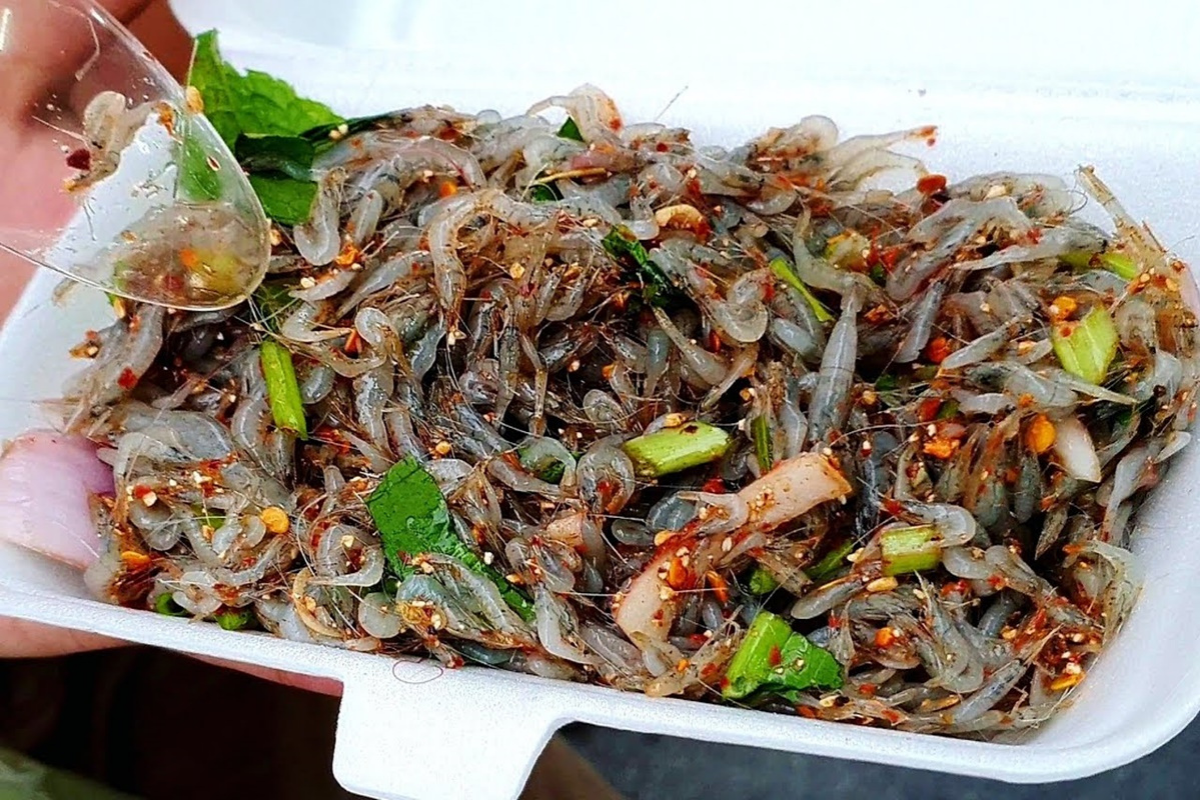 World's Most Bizarre Food: Goong ten from Thailand World's Most Bizarre Food: Goong ten from Thailand The street vendors in Thailand "upgrade" the raw shrimp food into a more fun version called Goong ten, which means clam dancing. Scroll on to ... |
 Steamed Burger - one of the Weirdest Foods in the Americas Steamed Burger - one of the Weirdest Foods in the Americas If you hear the word "Burger", you could probably think of a burger made from fried chip and chicken or toasted beef. However, do you ... |
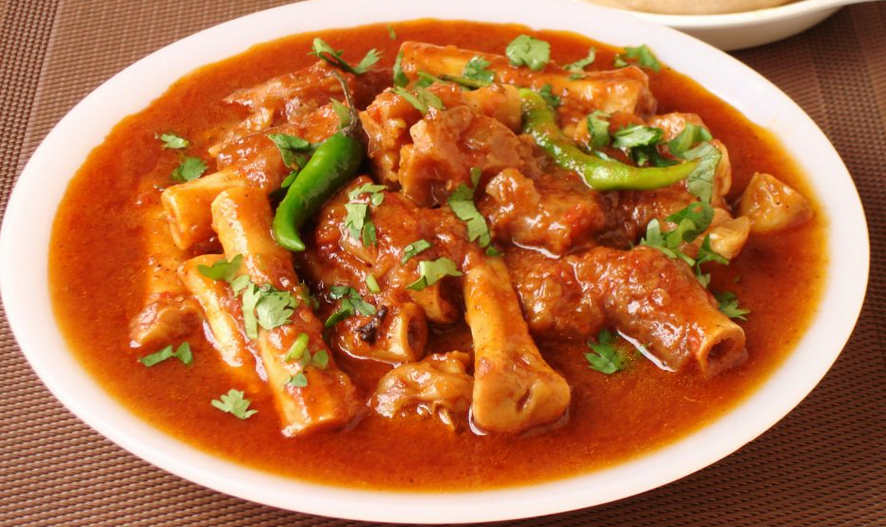 ONLY in PAKISTAN: Paaya - Weirdest Food in the world ONLY in PAKISTAN: Paaya - Weirdest Food in the world For those who have tried Pakistani Paaya once, it could be considered one of the weirdest foods in the world. What it is and some ... |

